I took about 20 minutes out from the Apothecary Chest build (on the Neanderthal forum, for those who do not go there) to put together a jig for the 40 remaining stopped dados.
If these were through dados, I'd simply hand plane them with a dado plane. If they were in walnut, as with the carcase, and not rock hard merbau, the secondary wood, I might continue with a saw, chisel and router plane, as with the first 6 I made. I like the control I get from using hand tools. A power router makes more sense at this stage.
I really took about 20 minutes for this jig. It is extremely simple, and should be very easy to use.
My reasoning said that one either creates a dado to match a panel, or one makes a panel to match a dado. There is an adjustable jig that seems quite popular, one that matches the dado to the thickness of the panel. I have decided to go the other way, that is, to make all the dados 12mm, and then make all the panels also 12mm. I believe that this will be much faster.
The jig is simply melamine veneered chipboard with side fences. The groove down the centre is 12mm wide.
The stop was an afterthought, but works well ...
The idea is that the groove can be placed exactly in line with the markings, and the dado have a defined end point.
It is dedicated to this router. The round base makes it easy to move (especially with waxed surfaces).
The underside has strips of non-slip. There is sufficient surface area for claping as well.
Are there weaknesses to this method?
Regards from Perth
Derek






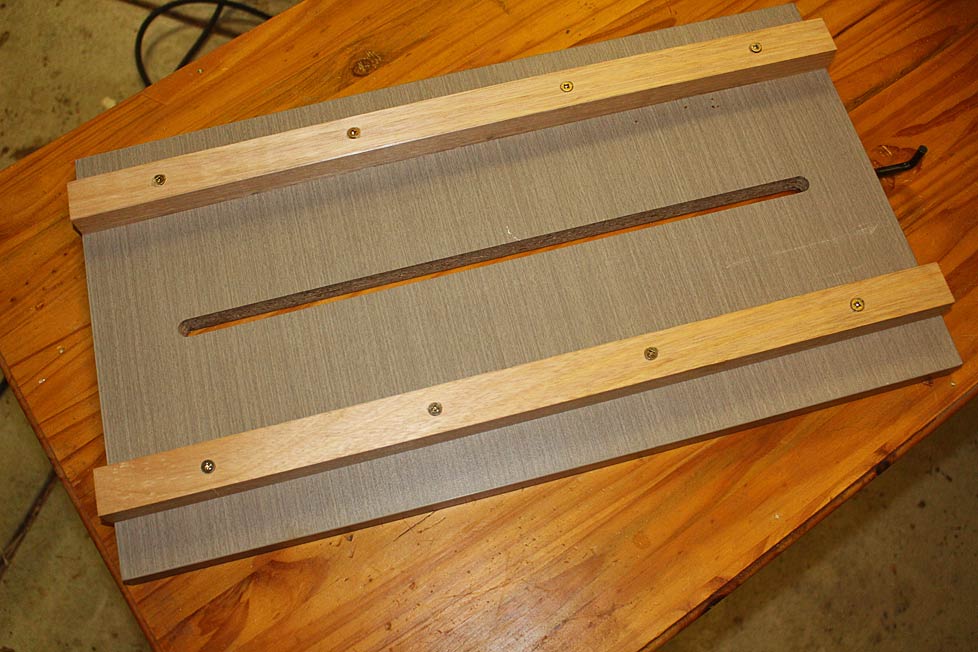
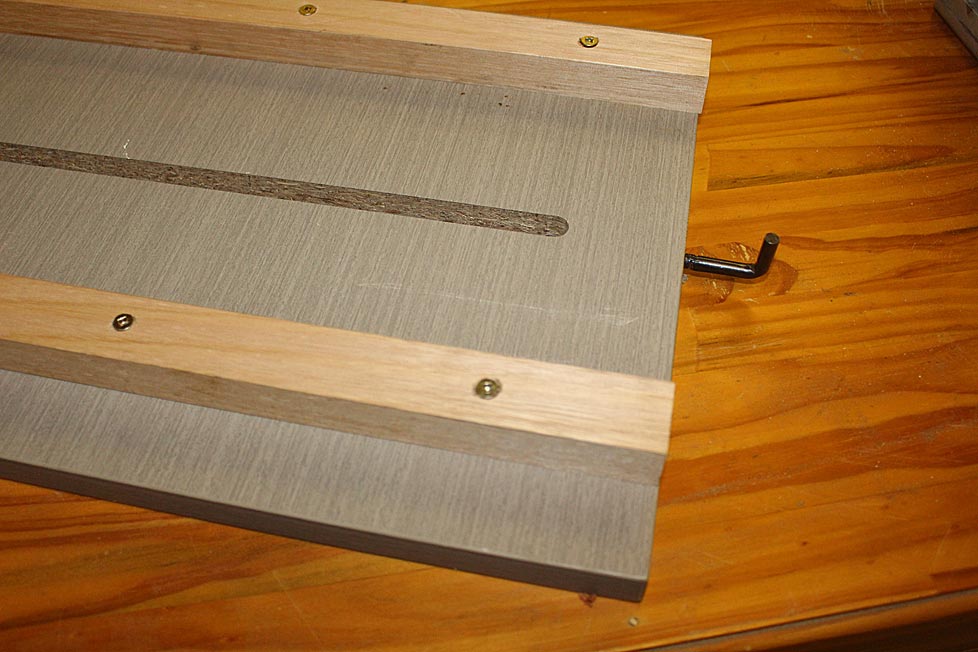
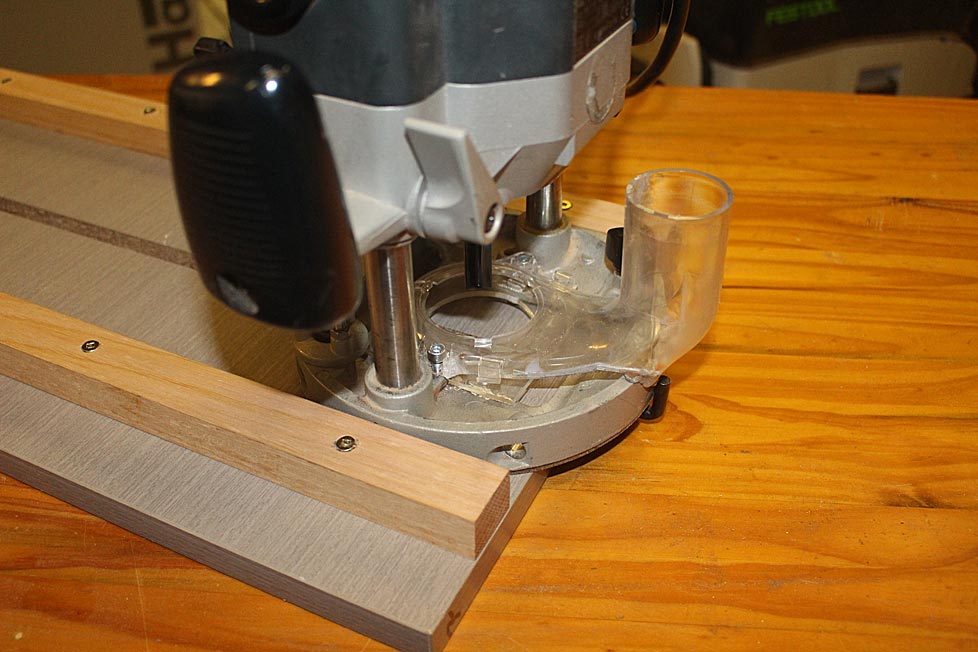
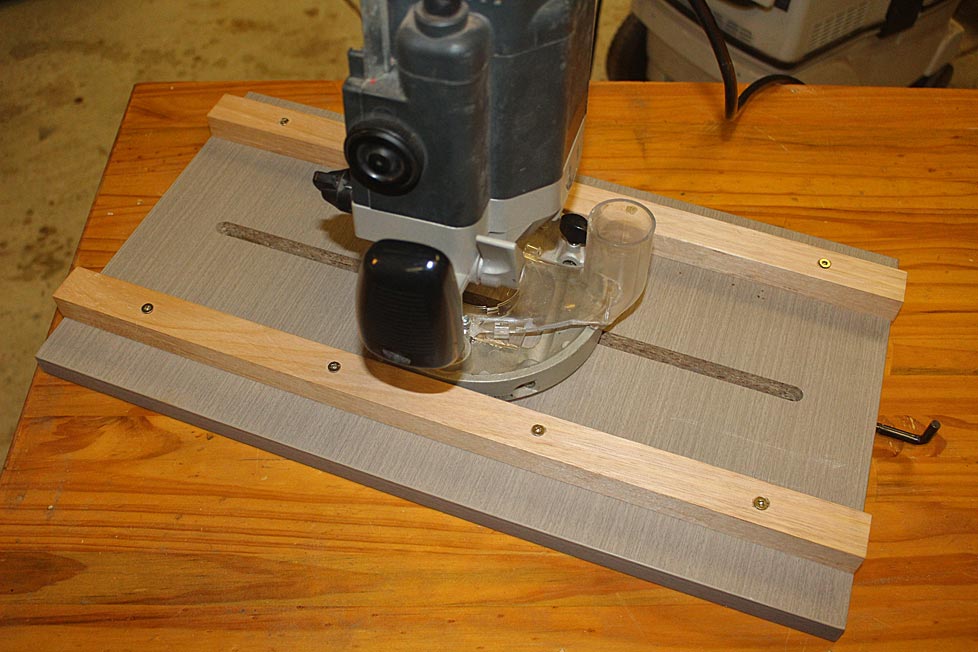
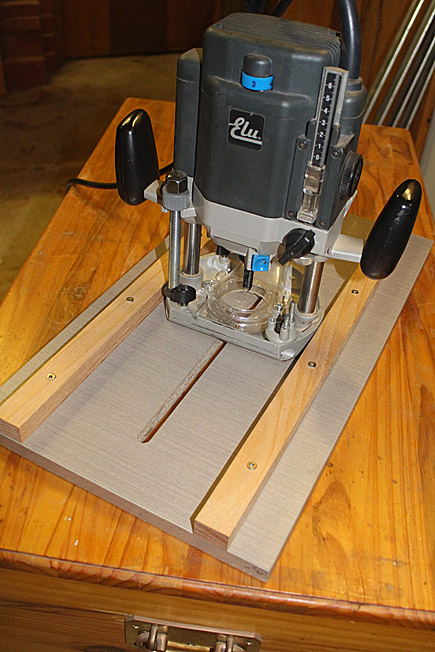


 Reply With Quote
Reply With Quote